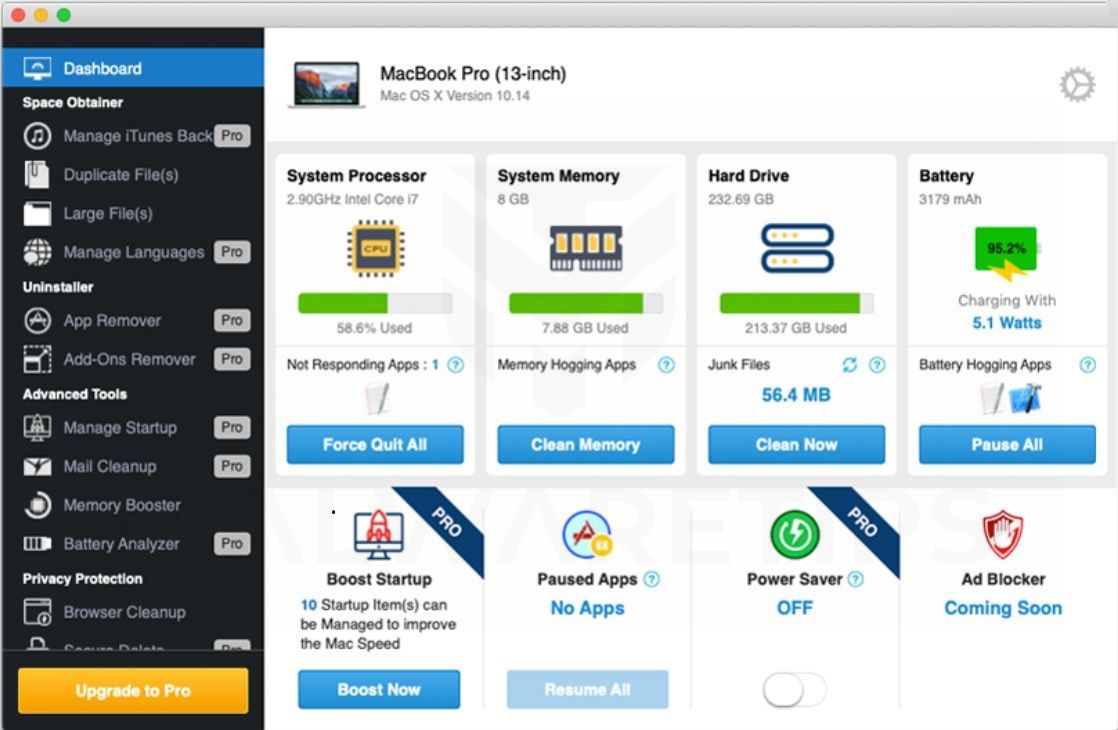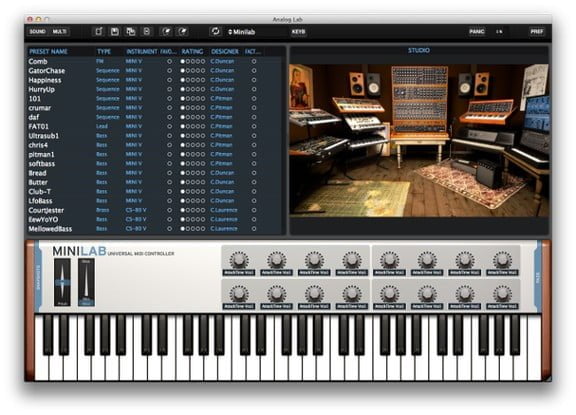Software To Clean Up Mac
CleanMyMac X came from a trusted developer and it is an “all-in-one” cleaning software for devices that run on the Mac Os. It has completed an updated transformation in the area of comprehensive cleanup, management tool, and optimization. Clean up your desktop and delete any files you don’t need. Install Software Updates. Install software updates to get the latest bug fixes, features, and, most importantly, performance enhancements. Both macOS and third-party software updates can help improve your machine’s overall performance.
It’s spring again, and with the new season comes the age-old ritual of cleaning out things you ignored for most of the year. Far be it from me to suggest that you clean out your basement, garage, or attic, but I would be remiss if I didn’t recommend you take a closer look at the crusty corners of your Mac. Last year, Chris Breen shared valuable Tips for a tidier Mac—all of which are worth revisiting. But I also want to draw your attention to a half-dozen digital dust bunnies that you might not have considered:
Best Software To Clean Up My Mac
1. Get rid of old iChat logs
If you use iChat, you can have the program store logs of your chats. (Go to iChat -> Preferences, click on Messages, select Save Chat Transcripts To, and then choose a folder.) By default, the program saves transcripts in a folder called iChats in your Documents folder, but you can choose a different location to store these files.
With this preference set, iChat saves a log file of every chat. This is a great idea (and especially helpful at work) if you often need to refresh your memory about a conversation. But if you send images inline during chats, these files may take up a lot of space. If you look inside the iChats folder, you’ll see that the files are organized by date. While you may want to save recent chat logs, you may have months of files you can trash, saving a lot of disk space.
2. Delete application backups
Many programs offer automatic backups, and store copies of files in a selected folder, just as iChat saves chat logs. Two programs I use often—Bare Bones Software’s BBEdit and The Omni Group’s OmniFocus—do this. Some applications, such as OmniFocus, let you choose the location for the backups; others, like BBEdit, don’t. BBEdit stores its backups in a BBEdit Backups folder in my Documents folder; I have OmniFocus store its backups in my Documents folder as well.
If you use any application that saves backups, you may find that it has tucked away several gigabytes of duplicate files, depending on how the program saves them. (BBEdit saves a new backup every time you save a file.) Deleting these backup files can save space, and make searching via OS X’s Spotlight much easier.
While you’re at it, check in youruserfolder/Music/iTunes folder; you may find a Previous Libraries folder, which includes copies of your iTunes libraries that were saved after you installed a new version.
3. Get rid of Mail downloads
When you receive attachments to e-mail messages in Apple’s Mail, the files are stored with your messages at first. But if you double-click an attachment to view it, or if you use QuickLook to glance at it, Mail stores a copy in your youruserfolder/Library/Mail Downloads folder. You may have dozens of files here occupying a huge amount of space. You can generally delete these without worry. If you still have the original messages, the attachments are part of those messages. If not, you may have already saved the attachments to your hard disk.
4. Delete log files
Your Mac stores lots of log files, most of which you never need to review. Open the Console application (in /Applications/Utilities), to see a list in the Console Messages window sidebar.
You can delete many of these files without affecting your Mac, and you can save significant space, since some of these files can be quite large. For instance, in the screenshot above, you can see a number of system.log files. The first one—system.log—is the current file, but the others, with the .bz2 suffix, are archived files.
Delete these files with Titanium Software’s free utility Onyx. Launch the program, click on Cleaning in the toolbar, and then click on the Logs tab. Check System Archived Logs, and then click Execute. While you’re using Onyx, check out the many other files that the program can delete to clear up space on your Mac.
5. Weed out iTunes dupes

If you’re cavalier about how you monitor your iTunes library, you may have a lot of duplicate files. iTunes has a built-in feature to help you find duplicates, to see if you copied some files twice, or if you have the same songs on original albums and others from best-of albums.
To use this feature, choose File -> Display Duplicates. This shows all tracks that share the same name and artist. If you hold down the Option key when you select the File menu, the menu item changes to Display Exact Duplicates. This sorts for duplicates where the name, artist, and album match. Check these files carefully. You may find some that you can get rid of, saving space not only on your Mac, but also on your iPad or iPhone.
Still, iTunes’ duplicate search is limited. Doug Adams’ $15 Dupin gives you much more power to weed out duplicates, sorting by a variety of different criteria. If you add lots of music to your iTunes library, Dupin is a great way to slim it down.
6. Reset Safari

If you use Apple’s Safari, some of the program’s features can take up unnecessary space. For instance, the cache file is intended to make your browsing snappier, but can easily consume hundreds of megabytes. When it gets too big, it can actually slow down browsing. History files can make Spotlight searching sluggish. And Top Sites, Website preview images, and Website icons (favicons) can slow down the program as well.
How Do I Clean My Mac
Every now and then it’s a good idea to reset Safari. Choose Safari -> Reset Safari and check the options that interest you.
Clean Up Macbook Pro
I don’t reset or delete everything—you can see my choices in the screenshot above. Choose what’s most important to you, and reset Safari every now and then to speed up your browsing and save disk space.
Best Software To Clean Up Mac
One last tip: have you looked in your Downloads (youruserfolder/Downloads) folder lately? You may find plenty of unneeded copies of files there too.
Free Software To Clean Up Mac
Senior contributor Kirk McElhearn writes about more than just Macs on his blog Kirkville. Twitter: @mcelhearn Kirk’s latest book is Take Control of iTunes 10: The FAQ.
